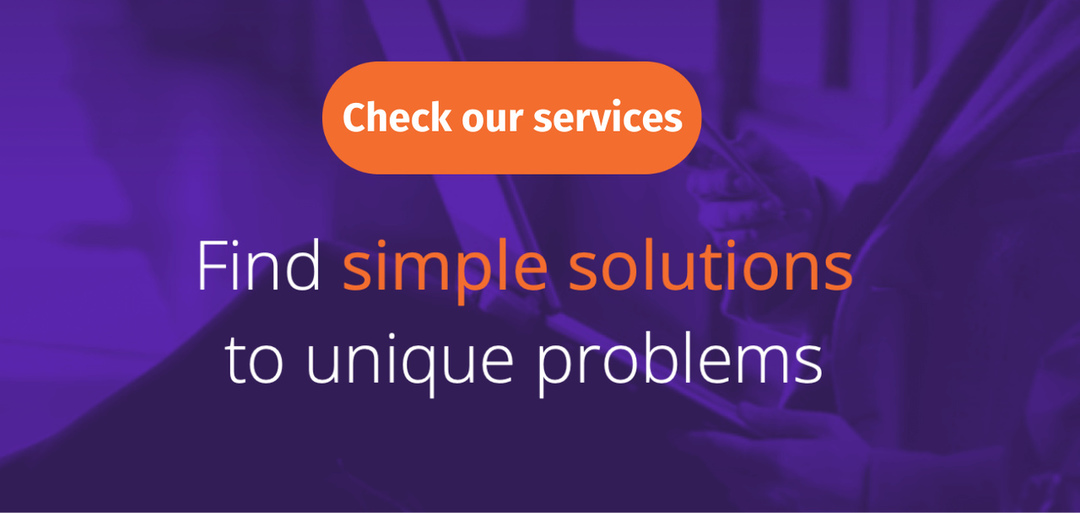Why Use Agile Methodology in Software Development?


Agile software development is nothing new, and agile methodologies have long been used in other industries as well - not only in software development. However, for many, this term is still not entirely clear.
When does Agile start working in your company? And when is it actually just a work unfairly enriched with a popular slogan?
Short History of Agile Methodology
In the 1990s, development teams started working with what can now be considered agile software development. At the end of the 20th century, various programmers and teams did a lot to simplify the development work, which is why this method became known primarily as "agile" in managing IT projects.
Each programmer represented different methodologies such as Extreme Programming, SCRUM, DSDM, Adaptive Software Development, Crystal, Feature-Driven Development, and Pragmatic Programming.
They gathered their experience in software development and interaction with teams, solutions, principles and work methodology into one Manifesto known as the Agile Manifesto.
The Scrum and Kanban methods were also developed during this time, which could not be summarized as "agile product development" because that term did not exist yet.
One breaks up the project instead of using traditional methods – e.g. the waterfall model - to follow a planned, linear and bureaucratic process.
The agile methodology gives the team of programmers much more responsibility.
In addition, you are more or less saying goodbye to massive projects: instead of spending months or even years manufacturing a product, agile teams only spend a few weeks in a work phase.
A finished product, an update, or a part of the program can be presented to the customer. The Agile Manifesto agreed on twelve principles and four values for this to succeed.
Manifesto for Agile Methodologies
We are uncovering better ways of developing
software by doing it and helping others do it.Through this work we have come to value:
Individuals and interactions over processes and tools
Working software over comprehensive documentation
Customer collaboration over contract negotiation
Responding to change over following a plan
That is, while there is value in the items on the right,
we value the items on the left more.
What is Agile Software Development?
Agile is a group of methods created to produce software based on iterative-incremental programming.
The most critical assumption of agile methodologies is that customer requirements often evolve during the project duration. Therefore, it is essential to periodically return to previous processes to continuously improve the project.
Agile occurs in cooperation with self-managed teams whose aim is to carry out software development processes.
Generally, software development involves the planning and implementation of software projects. These projects can be, for example, applications for end-users, developers and operating systems that are built using programming languages and frameworks.
Agile has become the standard in software development and is used by over 80% of companies.
12 Agile Principles
The Twelve Principles of the Agile Manifesto deal with the more detailed instructions necessary in an agile process. They provide additional information and broaden the idea of value. But even these are not basic guidelines - the Manifesto does not provide for them. Instead, the rules are broad and are used to distinguish agile from not agile methods.
Customer satisfaction
The customer should always be satisfied with early and continuous delivery - every software and feature update.
Flexibility
Agile teams always value change as positive, even if it occurs late in the development process. If you follow the Agile Manifesto, adapting to changed requirements gives the customer a competitive advantage.
Delivery
Available software is delivered immediately, within weeks or months. A shorter time frame is always welcome.
Collaboration
Developers and colleagues from the sales and marketing departments must work closely together. The Agile Manifesto calls for daily meetings.
Support
The environment must also be appropriate for motivated individuals and creative teams to work well. For this purpose, they need the support of others and, above all, the trust of their superiors.
Culture of conversation
Face-to-face communication is the best way to communicate information effectively without misunderstandings. A face-to-face conversation where you can ask questions and avoid erroneous conclusions allows you to avoid misunderstandings and make the necessary changes to the project, including documentation.
Read more: 5 Reasons Why Software Development Outsourcing Fails
Achievement
Team success can be measured primarily by the release of working software.
Sustainable development
Agile processes harness change and development, so the development team should continue to work evenly and constantly. In addition, all involved, not only programmers, should continue to work on publications, research and audience feedback even at the early stage of application development.
We use Elixir to achieve this goal - read more about this great language here: What is an MVP, and why Elixir is a perfect language for building a minimum viable app?
Quality
Developers should always ensure that their products meet the highest standards, technically and in design.
Simplicity
Keep your work as simple as possible. Omitting everything that can be avoided leads to a leaner process and better results.
Organization
Only self-organizing teams are capable of exceptional results, so letting the teams organize themselves is crucial.
Retrospective
An essential aspect of Agile Software Development is asking yourself questions. To constantly improve the work of the team, members and project managers have to regularly exchange information about their work and adapt their approach accordingly.
Agile Software Development Process and Tools
The benefits of Agile Software Development dictate a focus that teams should always have during development.
People and interactions over processes and tools: The people involved and their cooperation with each other are more important than the toolset or processes used within the team.
The development should be focused on working end product instead of extensive documentation - documentation of the work is of secondary importance.
Working with the client instead of negotiating a contract: Agile product development team is more focused on adapting to the client and his requirements than negotiating a contract.
Responding to changes in the plan: It is assumed that software development must respond to constant changes. Therefore, it may be necessary to overturn a previously agreed agenda.
These values should be understood as a guide. They don't include detailed instructions but are meant to remind programmers of the critical aspects of production: working as a team, focusing on software, thoughts about the client, be flexible to changes!
All other elements, which are undoubtedly also important, are subordinated to this point.
Agile Project Management
The Agile Manifesto applies its values and principles only to software development. This circumstance is due to the composition of the authors: the developers have come together to work out a better way to work on software development.
However, the key points of agile methodology are so broad that they can be easily applied in other areas of work, which is why project managers, product owners or entire corporations within the organizational structure willingly use agile methodology in their projects. Agile software development becomes flexible, and the "product" becomes all the company's values or agile project. A service can also be viewed as a product.
Processes in Agile Software Development
Certain project management practices have been established in an agile environment for you to implement an agile approach in a project team or company - "agile development" is just a general term. Many of these techniques can be found in agile software development, including Scrum, Kanban, Extreme Programming, Function Oriented Development, Behavior Oriented Development and Chrystal.
Read more: MVP, MBI, MMF and MMR - What is the Difference
Backlog
The idea of a directory that collects all the work that needs to be done but is currently not being developed is characteristic of an agile approach. The reason for this is the short operating phases. Instead of dealing with several tasks at once or assigning each task a specific amount of time in an extensive schedule, you have a flexible pool in the background. From this, the agile team can choose the next task.
Retrospectives
Regular meetings are not only present as an abstract principle in Agile methods but are sometimes particularly required. Scrum, in particular, is known for having a fixed plan for meetings. Only when a team regularly deals with challenges and problems and successes can it improve performance in the long run.
User Stories
The requirement of customer or user focus can be met through user stories. This way, we can briefly explain in plain language what the function must be able to do in the user's best interest. You then write this description on a so-called story card and arrange all cards on the story map, ensuring continuous improvement for the customer's needs.
Agile Testing
In Agile Software Development, testing is an integral part of the development process. Typically, at the end of an iteration - a short phase of work - the product is team-tested before being considered "ready" and delivered to the customer. Only then does the next iteration start with the new task.
Pair programming
The four-eyes principle is used in pair programming. Two programmers share the workplace. At the same time, one of them writes the code, and the other checks the input. While this costs more time (the tester could write the code himself during this time), it should provide fewer errors in the code.
Timeboxing
Some forms of Agile development have strict time limits. Again, Scrum is a good example where sprints are of a particular length. Finally, the team has to present the finished product. It requires proper design and selection of tasks.
There are many other techniques found in agile methods. However, they have in common the pursuit of streamlining workflow and increasing product quality.
Advantages and Disadvantages of Agile Software Development
Its supporters like to promote an agile approach to software development as the only way to create products nowadays. However, agility is not the right solution for all teams and businesses. Depending on the company's circumstances, the disadvantages may outweigh the advantages.
Advantages of agile software development
Higher quality of results.
With short iteration and development cycles, design teams are able to address users feedback with new features development and therefore react quickly to the needs of the market.
Previously, development teams worked on a project for weeks and months without the regular feedback loop from the target users group as well as the client. This approach has often resulted in outcomes that completely "ignore" user needs that have changed in the meantime. As a result, the team's progress was often thrown into the trash because it differed too much from the new arrangements. This kind of approach often resulted in allocation of extra funds needed to address the new requirements and alignments with real vision.
With the right concept and application, this has a much lower probability to happen with agile software development. The result of each development cycle is always a small but valuable part of the overall project.
High customer satisfaction.
What could be the more significant benefit of flexible work than satisfied customers?
Through direct involvement in product development and listening to product recipients, customers know that they have a tangible impact on the quality and result of the valuable software.
In addition, thanks to transparent and continuous communication, the development team can always be sure that they are creating something that offers real added value for customers and target groups and can constantly adjust this during the process.
Flexibility.
The most apparent advantage of Agile methods is flexibility. As the project develops, the needs and goals of the client and target group evolve in parallel with the requirements of the product or platform.
Agile teams seamlessly adapt to this change without changing their ability to deliver helpful design units.
Better control over the progress of the project.
An essential advantage of Agile Software Development is that the highest priority features are developed first.
This allows the team greater control over the immediate value they deliver to customers/target audiences and can explain, modify, and refine requirements as the process progresses.
Every project has bugs, errors, and misunderstandings. However, continuous communication and the smallest possible task packages are limited in a way that they can be quickly intercepted and repaired.
Better project predictability.
Short development cycles, and iterations, are not as burdensome as complete projects because the development team is constantly supplied with new information and thus is able to respond to challenges and unique requirements in a better way.
Thus, one of the weaknesses mentioned becomes a great strength of agile methods if adequately implemented.
Transparent and continuous communication between the project team, client, and target group favours creating a realistic register of priorities that lists all tasks to achieve a successful project outcome.
Limiting the risk of failure for the project.
With a transparent approach that reduces the continual number of tasks, Agile programmers can well and proactively control the four main risk areas of software development - quality, time, cost and added value.
Agile prioritization reduces the risk of overdoing one of these areas at the expense of the other.
Continuous improvement of the team.
Every agile development team has the goal of continual improvement.
Improvements must include sustained, regular, widely accepted and participatory solutions for the entire team.
Solutions should not be final but must be open to change.
This attitude improves internal team structures, relies on further training rather than standing still, and promotes talents and interests that previously remained undiscovered in classical processes.
Raised team morale.
Agile teams have well-defined roles, communicate clear expectations, prioritize team productivity, establish a principle of transparency, set measurable goals, and evaluate progress.
As a result, it is difficult to fall into the pitfalls of teams of misunderstanding, unclear roles and a weak priority structure. Better communication between different roles leads to much more respect for everyone on the team.
Agile projects can only work successfully when the entire team works together.
Disadvantages of agile software development
Deficiencies in the project documentation.
The purpose of the documentation is to facilitate the transfer of knowledge within the team through effective communication.
Missing documentation can be a problem not only in Agile projects - transparent exchange of results, findings and improvements are essential for everyone involved in the project to develop as a team and optimize processes.
Extended deadlines and lack of commitment.
Agile software design always carries risks that may prevent timely implementation, such as illness, vacation, and random situations.
Team errors, scheduling errors, process disruptions, and unexpected changes occur in Agile and Cascade projects. Even if you plan your sprints perfectly, there may be times when you skip a step and make up for it later with more work that requires more team effort.
It quickly happens that project teams repeatedly postpone tasks to the next sprint, maintain flexible deadlines and accumulate non-binding commitments. This can lead to stress on the project team and frustration with the customer.
Communication problems with the client.
Of all those involved in the project, the product owner should be the best informed about the target audience and therefore often serves as a direct source of user feedback.
If communication between the software house agency and the client is slow or incomplete, essential insights and a lot of time are lost.
To avoid unnecessary iterations and excessive communication overhead, you can automate non-value-added user tasks and tests.
Read more: In-house vs Outsourcing vs Freelancing Software Development
Ready to scale your business with the right tech partner?
Related posts
Dive deeper into this topic with these related posts
You might also like
Discover more content from this category
You came up with an idea where you see the potential to create your own app. I assume that you are looking for information on the Internet or groups of business environments, how to check if your investment will find users and have sales potential.
Building minimum viable products (MVPs) has become an essential component of a successful product strategy. Learn how an MVP can be created by 11 real business examples that successfully nailed MVPs.
The foundation of any software application lies in its tech stack. But how do you choose the right one for your business? This guide will help you to discover the tech stacks field, offering insights and recommendations for businesses of all sizes.









